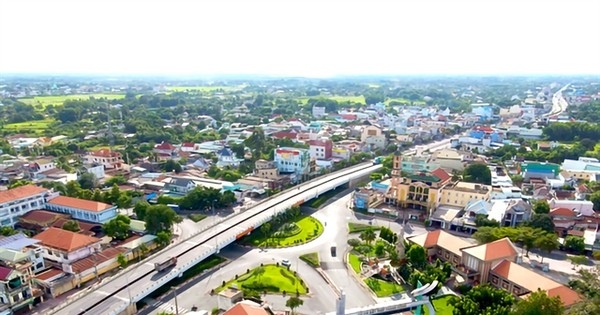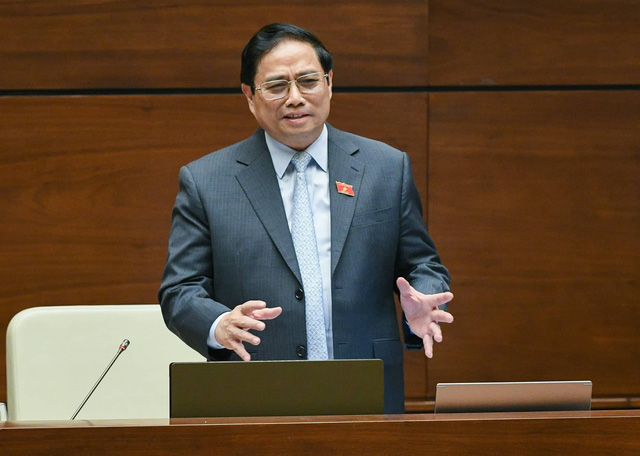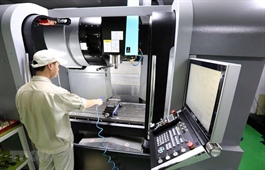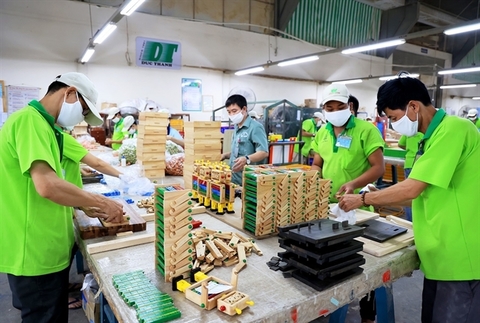Development of Cu Chi district faces serious hurdles
Development of Cu Chi district faces serious hurdles
On 12 October, President Nguyễn Xuân Phúc held a meeting with deputies of the National Assembly of Ho Chi Minh City with voters of Cu Chi and Hoc Mon districts.
Củ Chi District in HCM City. — Photo tuoitre.vn |
President Phúc asked Ho Chi Minh City, and Cu Chi and Hoc Mon districts to completely resolve the obstacles that led to suspending of key projects in the area, so as to ensure the future legitimate interests of the general public.
Projects being axed
Cu Chi district became the focus of attention for the public and investors about six months ago. The media excitedly reported that Cu Chi district would be converted and developed into a city. This news spread after the People's Committee of Ho Chi Minh City held an investment promotion conference in Hoc Mon and Cu Chi districts on 12 April, which was hosted by President Nguyễn Xuân Phúc and Secretary Nguyễn Văn Nên of the Ho Chi Minh City Party Committee, in the presence of many foreign investors.
The conference called for investments in 55 projects, with a total estimated capital of more than USD 12 bln, about VND 285,000 bln. This was to be awarded with ten investment licenses to enterprises, and 31 investment Memorandum of Understanding (MOU) to be signed that were valued at hundreds of thousands of billion dongs. After this, people living in Hoc Mon and Cu Chi districts built up their expectations, which are now being axed and their dreams fading.
According to a report of the People's Committee of Cu Chi District, the whole district has 95 projects that were approved by the City Council almost nine or ten years ago. However, up to now, the number of completed projects has only reached thirty out of 95 projects , while the People's Committee of Cu Chi district has proposed to cancel 22 projects because they were going too slow and cannot be implemented for last 24 years ago, since 1998. This covered an area of more than 6,000 ha for more than 300,000 people, which was later adjusted to 4,500 hectares for a population of 600,000. However, so far, along with the second planned satellite town of Hiep Phuoc, this project is still on paper.
A similar situation prevails in the project of Saigon Safari park covering an area of 456.85 ha; a commercial center covering 12.29 ha; village of flowers, ornamental plants, and ornamental fish covering 509 ha; a golf course in Tan Thong Hoi commune covering 200 ha; an industrial park (IZ) Northwest of Cu Chi covering 173.24 ha; and the Bau Tran industrial cluster covering 75 ha, which were all licensed 15 to 20 years ago, but so far have remained on hold.
Main bottlenecks
Cu Chi district covers an area of 435 square kms, the second largest in Ho Chi Minh City after Can Gio district with 704 square kms. The district has a small population of about 400,000 people, while the land fund is still relatively abundant with conversion potential for 60% of the area. The ground there is hard, the terrain is flat, population is sparse, and Cu Chi district has the advantage of being adjacent to fast developing areas such as Long An and Binh Duong provinces.
In addition, Cu Chi district also has social advantages as this place is famous for traditional crafts such as rice paper, knitting, specialties such as beef, and sour sauce, and the Don ca Tai tu groups, war relics, and ecological forests. All these combine to make Cu Chi district area extremely attractive. However, despite this, investors are still shirking in developing this area, unlike in neighboring areas of Binh Duong and Long An. It is therefore essential to find the bottlenecks and work towards resolving all obstacles and completing all pending and vital projects for this area.
The first and biggest challenge that needs to be tackled is the current congestion in traffic. The traffic moving to and from Cu Chi district is certainly better that it was ten years ago, but the strategic Trans-Asian Road from the center of Ho Chi Minh City to Cu Chi is only about 35 kms but it takes nearly two hours during rush hour. There are frequent traffic jams because of narrow roads, and commercial residents work close to the road, causing a permanent congestion at Tan Binh Industrial Park.
There is an expectation now that if key projects are successfully implemented, they will contribute to changing the traffic scenario and also create a new vibrant pulse in Cu Chi area. To support this, the highway connecting Ho Chi Minh City to the two border gates of Tay Ninh such as Ho Chi Minh City to Moc Bai and Ho Chi Minh City to Sa Mat pass through Cu Chi area can help clear traffic movement.
The second challenge is the existence of the Tan Phu Trung Industrial Park dating back to 2003. At that time, it was considered a place full of polluting industries and emitting a huge amount of industrial waste. Some of these companies were relocated from the inner city under a program to limit production facilities, but another part was newly established. Polluting units include paper, cotton, aluminum, rubber, plastic, dyeing, and pharmaceuticals. Ironically, this 550-hectare industrial park is located close to Highway 22, right in the heart of the Northwest satellite urban area designated near Cu Chi district.
The third challenge that makes investors hesitate in pouring in their money is the Northwest Solid Waste Treatment Complex that was set up in 2003. Over the last 17 years, the pollution here has become more and more serious, which has made people living there, and in its periphery, very angry. There are currently two enterprises receiving and treating waste, namely, the Tam Sinh Nghia Investment Development Joint Stock Company and the Vietstar Joint Stock Company.
For many years, the two enterprises have used the waste incineration technology to treat and replace the previous landfill. However, the process of burning garbage at this complex generates huge columns of smoke accompanied by a stench that spreads over an area of tens of square kilometers. Since there was a garbage treatment plant, fruit gardens, immense rice fields, and fresh canals filled with fish were almost wiped out, replaced by volumes of dust. The canal water in the vicinity of the garbage factory is also black in color.
The amount of stagnant waste the two companies are piling outdoors in large volumes covered with HDPE tarpaulin, leak from these dumps and seep into the ground, polluting groundwater and damaging arable land. The dirty water leaks from the garbage into the ground, making the whole area devoid of any trees or live fauna. If the local people cannot live in this area, then any investor would also not be keen to set up a business project here. In addition to air pollution, the noise pollution emanating from the Northwest Solid Waste Treatment Complex, such as sound of engine noise, and garbage trucks moving all day, also is an offensive sight. During cold winter days, this entire complex is engulfed in thick smoke, making it impossible for human or animal survival.






















